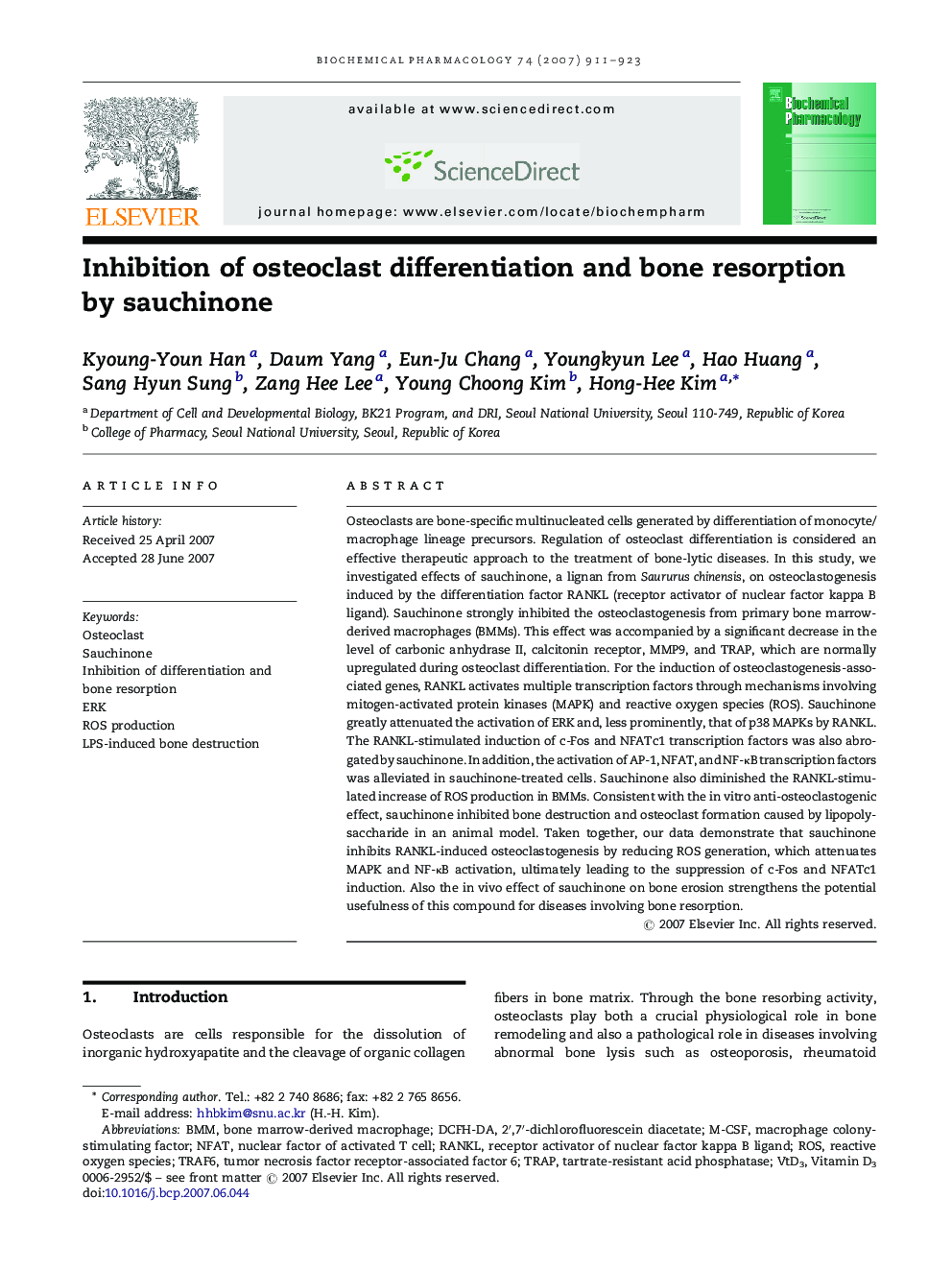| کد مقاله | کد نشریه | سال انتشار | مقاله انگلیسی | نسخه تمام متن |
|---|---|---|---|---|
| 2514841 | 1118488 | 2007 | 13 صفحه PDF | دانلود رایگان |

Osteoclasts are bone-specific multinucleated cells generated by differentiation of monocyte/macrophage lineage precursors. Regulation of osteoclast differentiation is considered an effective therapeutic approach to the treatment of bone-lytic diseases. In this study, we investigated effects of sauchinone, a lignan from Saururus chinensis, on osteoclastogenesis induced by the differentiation factor RANKL (receptor activator of nuclear factor kappa B ligand). Sauchinone strongly inhibited the osteoclastogenesis from primary bone marrow-derived macrophages (BMMs). This effect was accompanied by a significant decrease in the level of carbonic anhydrase II, calcitonin receptor, MMP9, and TRAP, which are normally upregulated during osteoclast differentiation. For the induction of osteoclastogenesis-associated genes, RANKL activates multiple transcription factors through mechanisms involving mitogen-activated protein kinases (MAPK) and reactive oxygen species (ROS). Sauchinone greatly attenuated the activation of ERK and, less prominently, that of p38 MAPKs by RANKL. The RANKL-stimulated induction of c-Fos and NFATc1 transcription factors was also abrogated by sauchinone. In addition, the activation of AP-1, NFAT, and NF-κB transcription factors was alleviated in sauchinone-treated cells. Sauchinone also diminished the RANKL-stimulated increase of ROS production in BMMs. Consistent with the in vitro anti-osteoclastogenic effect, sauchinone inhibited bone destruction and osteoclast formation caused by lipopolysaccharide in an animal model. Taken together, our data demonstrate that sauchinone inhibits RANKL-induced osteoclastogenesis by reducing ROS generation, which attenuates MAPK and NF-κB activation, ultimately leading to the suppression of c-Fos and NFATc1 induction. Also the in vivo effect of sauchinone on bone erosion strengthens the potential usefulness of this compound for diseases involving bone resorption.
Journal: Biochemical Pharmacology - Volume 74, Issue 6, 15 September 2007, Pages 911–923